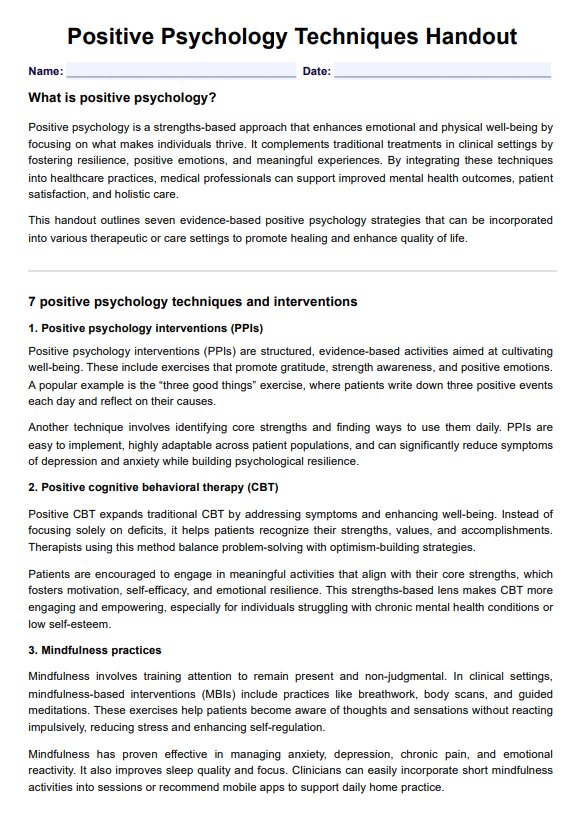Positive psychology interventions focus on strengths, positive emotions, and meaningful experiences to enhance well-being, increase resilience, and reduce symptoms of mental health conditions. They support mental health promotion across clinical, educational, and community settings.

Positive Psychology Techniques Handout
Get Carepatron's free Positive Psychology Techniques Handout to help patients apply techniques that support daily well-being, resilience, and happiness.
Positive Psychology Techniques Handout Template
Commonly asked questions
Common techniques include gratitude journaling, mindfulness exercises, acts of kindness, goal setting, and identifying personal strengths. These approaches are designed to evoke positive emotions and improve psychological functioning in everyday life.
In the workplace, positive psychology interventions focus on boosting employee engagement, satisfaction, and resilience through strengths-based feedback, recognition practices, and mindfulness programs. These techniques help reduce burnout and improve team cohesion and productivity.
EHR and practice management software
Get started for free
*No credit card required
Free
$0/usd
Unlimited clients
Telehealth
1GB of storage
Client portal text
Automated billing and online payments











